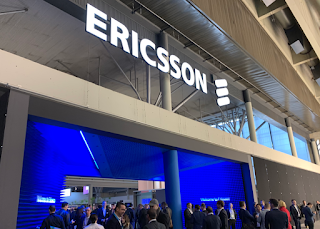The Open Networking Foundation (ONF) is now hosting the P4 Language Consortium, which the organization dedicated to the use and improvement of the P4 language.
P4 was designed to be target-independent (i.e. a program written in P4 could be compiled, without modification, to run on a variety of targets, such as ASICs, FPGAs, CPUs, NPUs, and GPUs), and protocol-independent (i.e. a P4 program can describe existing standard protocols, or be used to specify innovative, new, customized forwarding behaviors). P4 can be used for both programmable and fixed-function devices alike. For example, it is used to accurately capture the switch pipeline behavior under the Switch Abstraction Interface (SAI) APIs, used by the SONiC open-source switch OS. P4 is also used by the ONF Stratum project to describe forwarding behavior across a variety of fixed and programmable devices.
ONF will now host all P4 activities and working groups moving forward. The ONF will bring the P4 work under its umbrella of operator-led open source SDN projects, and, as with all ONF projects, the ONF will aim to strategically align P4 activities with the Linux Foundation to advance our shared mission of promoting open source as a tool for transformation and innovation. The P4 project will continue to operate as before with minimal disruption while benefiting from strategic alignment with ONF and from ONF’s operational infrastructure and expertise.
 “The entire ONF team is extremely pleased to be joining with the P4 community to grow our combined ecosystem. We see great synergy between all the ONF projects and P4, and our Stratum and COMAC projects are already making use of P4 in innovative ways. More closely aligning our activities will be of benefit to both communities, and we expect P4 to play a pivotal role as we continue to pursue the broader Next-Generation SDN agenda,” said Guru Parulkar, executive director and board member for the Open Networking Foundation.
“The entire ONF team is extremely pleased to be joining with the P4 community to grow our combined ecosystem. We see great synergy between all the ONF projects and P4, and our Stratum and COMAC projects are already making use of P4 in innovative ways. More closely aligning our activities will be of benefit to both communities, and we expect P4 to play a pivotal role as we continue to pursue the broader Next-Generation SDN agenda,” said Guru Parulkar, executive director and board member for the Open Networking Foundation.
“P4.org helped grow the fledgling P4 language into the de-facto industry standard way to describe how switches, routers and NICs process packets. The synergies with ONF are clear: Both organizations develop community-owned open-source software for networking. It’s time for P4.org to be part of a larger, more established organization that can keep it open, independent and steadily growing for many more years to come,” said Nick McKeown, Stanford Professor and co-founder and board member of the ONF and P4.org.
http://www.opennetworking.org
P4 was designed to be target-independent (i.e. a program written in P4 could be compiled, without modification, to run on a variety of targets, such as ASICs, FPGAs, CPUs, NPUs, and GPUs), and protocol-independent (i.e. a P4 program can describe existing standard protocols, or be used to specify innovative, new, customized forwarding behaviors). P4 can be used for both programmable and fixed-function devices alike. For example, it is used to accurately capture the switch pipeline behavior under the Switch Abstraction Interface (SAI) APIs, used by the SONiC open-source switch OS. P4 is also used by the ONF Stratum project to describe forwarding behavior across a variety of fixed and programmable devices.
ONF will now host all P4 activities and working groups moving forward. The ONF will bring the P4 work under its umbrella of operator-led open source SDN projects, and, as with all ONF projects, the ONF will aim to strategically align P4 activities with the Linux Foundation to advance our shared mission of promoting open source as a tool for transformation and innovation. The P4 project will continue to operate as before with minimal disruption while benefiting from strategic alignment with ONF and from ONF’s operational infrastructure and expertise.
 “The entire ONF team is extremely pleased to be joining with the P4 community to grow our combined ecosystem. We see great synergy between all the ONF projects and P4, and our Stratum and COMAC projects are already making use of P4 in innovative ways. More closely aligning our activities will be of benefit to both communities, and we expect P4 to play a pivotal role as we continue to pursue the broader Next-Generation SDN agenda,” said Guru Parulkar, executive director and board member for the Open Networking Foundation.
“The entire ONF team is extremely pleased to be joining with the P4 community to grow our combined ecosystem. We see great synergy between all the ONF projects and P4, and our Stratum and COMAC projects are already making use of P4 in innovative ways. More closely aligning our activities will be of benefit to both communities, and we expect P4 to play a pivotal role as we continue to pursue the broader Next-Generation SDN agenda,” said Guru Parulkar, executive director and board member for the Open Networking Foundation.“P4.org helped grow the fledgling P4 language into the de-facto industry standard way to describe how switches, routers and NICs process packets. The synergies with ONF are clear: Both organizations develop community-owned open-source software for networking. It’s time for P4.org to be part of a larger, more established organization that can keep it open, independent and steadily growing for many more years to come,” said Nick McKeown, Stanford Professor and co-founder and board member of the ONF and P4.org.
http://www.opennetworking.org



















